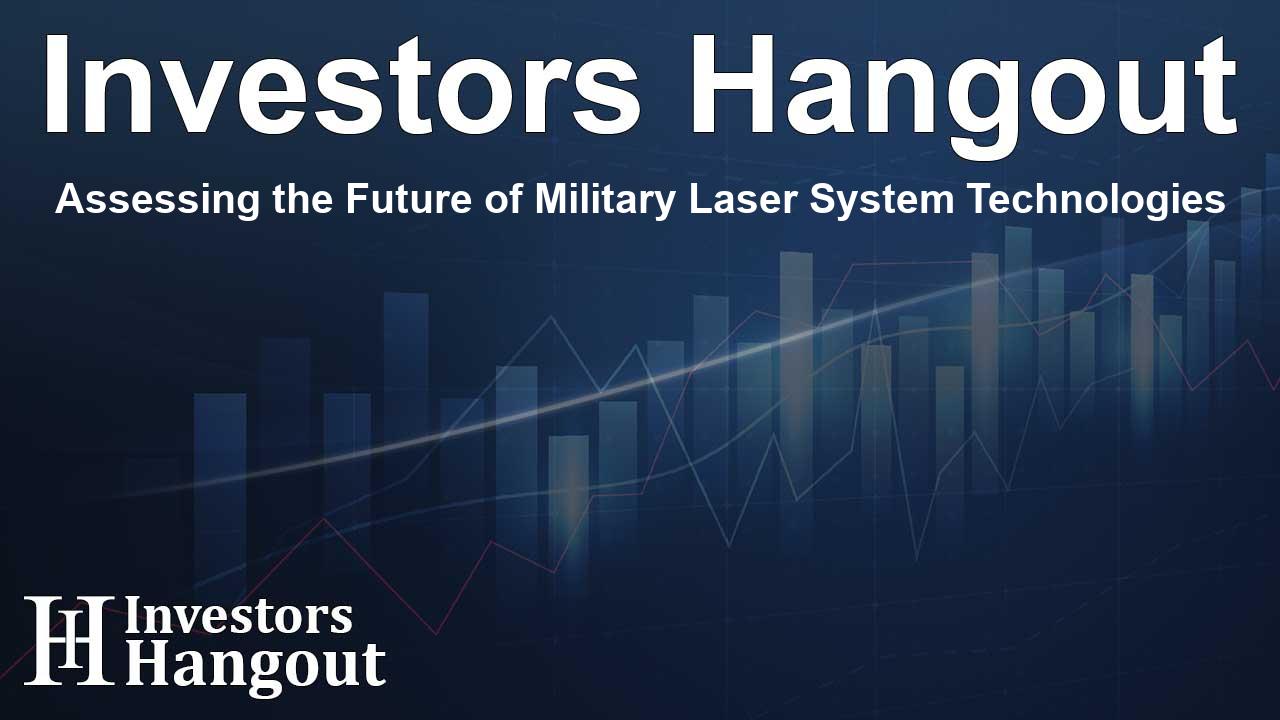Assessing the Future of Military Laser System Technologies

How Laser Technology Is Reshaping Military Systems
The military laser systems market is entering a pivotal stretch, with growth set to accelerate over the coming decade. As defense organizations push for greater precision and faster, more adaptable responses, global spending on military lasers is projected to climb from USD 5.6 billion in 2024 to USD 13.8 billion by 2034, reflecting a compound annual growth rate (CAGR) of 9.5%. This trajectory mirrors a broader reality: rising geopolitical tensions, larger defense budgets, and a clear shift toward technologies that deliver accuracy with fewer unintended effects. In short, military planners want tools that hit what they aim at—and only that—and laser systems fit that brief.
What’s Driving Growth in the Military Laser Market
Several forces are pushing the military laser systems market forward. Countries such as the United States, China, and Russia continue to invest heavily in defense technologies, and those investments increasingly favor systems that are precise, flexible, and cost-conscious over time. At the same time, the spread of unmanned aerial vehicles (UAVs) and evolving missile threats has sharpened the focus on advanced laser solutions for detection, tracking, targeting, and engagement. As militaries strengthen their countermeasures, demand for accurate laser-guided munitions and supporting systems is becoming a top priority across programs and platforms.
Directed-Energy Weapons Move to the Forefront
Directed-energy weapons are moving from concept to core capability in many plans and programs. High-energy laser (HEL) systems are often cited as leading examples because they’re designed to identify and neutralize incoming threats such as drones and missiles. Advances in fiber laser technology, in particular, are expected to propel the market by enabling systems that are more portable and energy efficient, without sacrificing performance. As components get smaller and power management improves, more platforms can carry these systems, making their real-world use on the battlefield more practical and more frequent.
Who’s Pushing the Technology Forward
The competitive landscape features a mix of established leaders and ambitious newcomers, with companies like Northrop Grumman Corporation playing a central role in next-generation laser development. These firms invest heavily in research and development while building partnerships that accelerate design, testing, and deployment. Collaboration matters here: as requirements evolve quickly and defense contracts grow more competitive, teaming up helps shorten development cycles and align solutions with what end users actually need. That combination—deep expertise and active partnerships—continues to shape the pace of innovation.
Global Market Landscape and Strategic Partnerships
North America currently leads the market, supported by robust funding and a sustained focus on modernization. The Asia-Pacific region, however, is gaining ground quickly as countries in the region increase defense budgets and pursue upgrade programs. To keep an edge, companies around the world are forming strategic alliances that pool talent, share risk, and advance technologies faster than any single organization could on its own. The result is noticeable growth in areas such as targeting systems, missile defense capabilities, and surveillance applications, where precision and reliability are non-negotiable.
Key Trends and Where the Opportunities Are
Today’s operational demands favor systems that are compact, lightweight, and energy efficient—equipment that can be moved, maintained, and deployed with minimal burden. Miniaturization continues to reshape what’s possible, allowing more capability to be packed into smaller footprints. Meanwhile, the integration of artificial intelligence for precision targeting and decision support is becoming a defining feature across the military laser landscape. Together, these trends open doors for companies that can deliver portable laser solutions that perform reliably in field conditions while keeping power and weight in check. That’s where the opportunity is strongest.
Challenges to Watch—and How the Market Competes
Even with strong momentum, the market faces hurdles. Regulatory requirements can be complex, and development costs are high, particularly for cutting-edge systems that must meet exacting standards. The real test is adapting quickly to shifting military needs while navigating these constraints. Still, the case for continued investment remains compelling: the push for advanced defense technologies, coupled with a persistent need for accuracy and control, creates room for growth. Companies that balance innovation with disciplined execution are well positioned to compete—and to deliver systems that matter on day one.
Frequently Asked Questions
What’s driving the surge in military laser systems?
Growth is fueled by larger defense budgets, rapid advances in laser technologies, and the need to counter modern threats such as UAVs. Militaries also want more precise tools that limit collateral damage, which keeps laser-guided solutions in high demand.
How fast is the market expected to grow?
The market is projected to increase from USD 5.6 billion in 2024 to USD 13.8 billion by 2034, reflecting a 9.5% CAGR over the period.
What role do companies like Northrop Grumman play?
They drive core innovation through sustained R&D and strategic partnerships, developing next-generation military laser systems and helping bring them from the lab to operational use.
Which regions have the most influence right now?
North America maintains a leading share, while the Asia-Pacific region is expanding quickly due to higher defense spending and ongoing modernization programs.
What technology trends should I watch?
Expect continued miniaturization, broader adoption of directed-energy weapons such as HEL systems, and deeper integration of AI for precise targeting and more efficient field operations.
About The Author
Contact Olivia Taylor privately here. Or send an email with ATTN: Olivia Taylor as the subject to contact@investorshangout.com.
About Investors Hangout
Investors Hangout is a leading online stock forum for financial discussion and learning, offering a wide range of free tools and resources. It draws in traders of all levels, who exchange market knowledge, investigate trading tactics, and keep an eye on industry developments in real time. Featuring financial articles, stock message boards, quotes, charts, company profiles, and live news updates. Through cooperative learning and a wealth of informational resources, it helps users from novices creating their first portfolios to experts honing their techniques. Join Investors Hangout today: https://investorshangout.com/
The content of this article is based on factual, publicly available information and does not represent legal, financial, or investment advice. Investors Hangout does not offer financial advice, and the author is not a licensed financial advisor. Consult a qualified advisor before making any financial or investment decisions based on this article. This article should not be considered advice to purchase, sell, or hold any securities or other investments. If any of the material provided here is inaccurate, please contact us for corrections.
